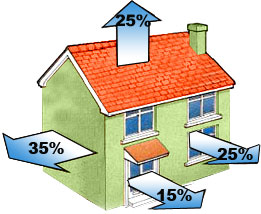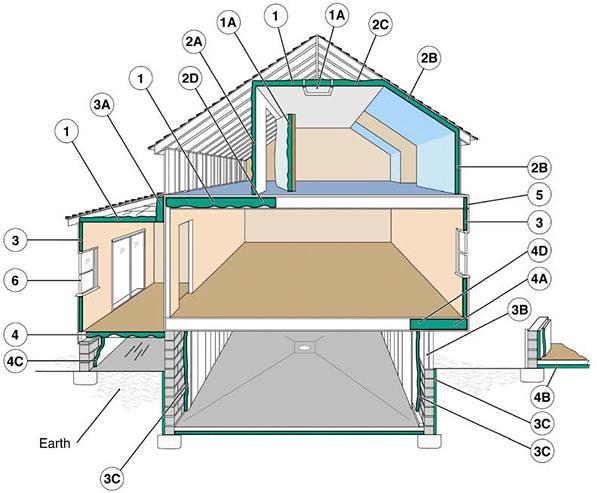Insulation
Unless your home was specially constructed for energy efficiency, you can probably reduce your energy bills by adding more insulation. Many older homes have less insulation than homes built today, but even adding insulation to a newer home can pay for itself within a few years.
To determine whether you should add insulation, you first need to find out how much insulation you already have in your home and where it is. Brewer and Associates can inspect your house and give you a whole-house energy assessment. An energy assessment, also known as a home energy audit, will also help identify areas of your home that are in need of air sealing. Before you insulate, you should make sure that your home is properly air sealed.
Fiberglass
Fiberglass (or fiber glass) — which consists of extremely fine glass fibers — is one of the most ubiquitous insulation materials. It’s commonly used in two different types of insulation: blanket (batts and rolls) and loose-fill and is also available as rigid boards and duct insulation.
 Manufacturers now produce medium- and high-density fiberglass batt insulation products that have slightly higher R-values than the standard batts. The denser products are intended for insulating areas with limited cavity space, such as cathedral ceilings.
Manufacturers now produce medium- and high-density fiberglass batt insulation products that have slightly higher R-values than the standard batts. The denser products are intended for insulating areas with limited cavity space, such as cathedral ceilings.
Cellulose Insulation
Cellulose insulation is made from recycled paper products, primarily newsprint, and has a very high recycled material content, generally 82% to 85%. The paper is first reduced to small pieces and then fiberized, creating a product that packs tightly into building cavities, inhibits airflow, and provides an R-value of 3.6 to 3.8 per inch.
Natural Fiber Insulation Materials
Some natural fibers — including cotton, sheep’s wool, straw, and hemp — are used as insulation materials.
Polystyrene Insulation Materials
Polystyrene — a colorless, transparent thermoplastic — is commonly used to make foam board or beadboard insulation, concrete block insulation, and a type of loose-fill insulation consisting of small beads of polystyrene.


